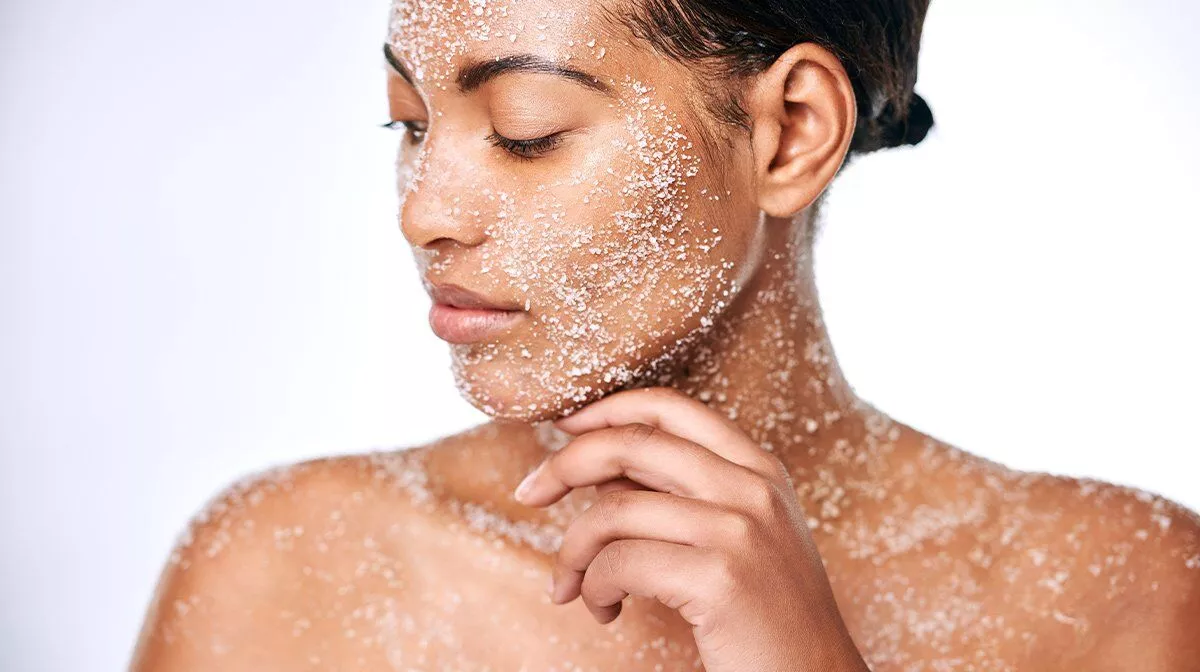Exfoliating is an essential skincare step that offers numerous benefits for the skin. By removing dead skin cells and impurities, exfoliation helps to improve skin texture, enhance radiance, prevent acne, reduce hyperpigmentation, boost collagen production, and promote even skin tone. This article explores the various benefits of exfoliating, different types of exfoliation, safe exfoliation practices, tips for different skin concerns, precautions, and potential risks.
Introduction
Taking care of our skin is crucial for maintaining its health and appearance. One effective way to achieve this is by incorporating exfoliation into our skincare routine. Exfoliation involves the removal of dead skin cells and debris from the skin’s surface, revealing a fresh and vibrant complexion underneath. In this article, we will explore the benefits of exfoliating and how it can transform your skin.
Understanding Exfoliation
2.1 What is Exfoliation?
Exfoliation refers to the process of removing dead skin cells, dirt, and excess oil from the outermost layer of the skin. It helps to unclog pores, prevent dullness, and promote cell turnover, which is essential for maintaining healthy skin.
2.2 Importance of Exfoliating
Exfoliating is vital for maintaining healthy skin because our skin constantly sheds dead cells, which can accumulate and lead to a dull and uneven complexion. By removing these dead skin cells, exfoliation allows new and healthier skin cells to surface, resulting in a smoother and more radiant appearance.
Benefits of Exfoliating
3.1 Removes Dead Skin Cells
Exfoliation is an effective way to slough off dead skin cells, allowing the skin to regenerate and reveal a fresher complexion. It helps to unclog pores and prevents the formation of blackheads and whiteheads.
3.2 Improves Skin Texture
Regular exfoliation smooths the skin’s texture by reducing the appearance of rough patches and unevenness. It can help to minimize the appearance of fine lines, wrinkles, and acne scars, resulting in a more refined and youthful complexion.
3.3 Enhances Skin Radiance
Exfoliating removes the build-up of dead skin cells, revealing a brighter and more radiant complexion. It promotes cell turnover, allowing the skin to reflect light more evenly, giving it a healthy and luminous glow.
3.4 Prevents Acne and Breakouts
Exfoliation plays a crucial role in preventing acne and breakouts by unclogging pores and removing excess oil and debris. It helps to keep the skin clean and balanced, reducing the chances of bacterial growth and inflammation.
3.5 Reduces Hyperpigmentation
Exfoliating can help reduce hyperpigmentation by sloughing off the top layer of skin, where pigmentation irregularities often reside. Regular exfoliation can fade dark spots, sunspots, and post-inflammatory hyperpigmentation, promoting a more even skin tone.
3.6 Boosts Collagen Production
Exfoliation stimulates collagen production, a vital protein responsible for maintaining the skin’s elasticity and firmness. By promoting collagen synthesis, exfoliation can help reduce the appearance of fine lines and wrinkles, giving the skin a more youthful and plump look.
3.7 Enhances Skincare Product Penetration
Exfoliating the skin creates a smoother surface, allowing skincare products to penetrate more effectively. By removing the barrier of dead skin cells, exfoliation ensures that moisturizers, serums, and other treatments can deeply penetrate the skin, maximizing their effectiveness.
3.8 Promotes Even Skin Tone
Exfoliation helps to even out the skin tone by removing dull and pigmented cells. It can address issues such as sun damage, melasma, and uneven skin tone, resulting in a more balanced and luminous complexion.
3.9 Stimulates Blood Circulation
The act of exfoliating stimulates blood circulation in the skin, promoting oxygen and nutrient delivery to the cells. Improved blood circulation can give the skin a healthy and rosy appearance, while also supporting the skin’s natural healing process.
3.10 Anti-Aging Benefits
Regular exfoliation can help slow down the signs of aging by promoting cell turnover and collagen production. It reduces the appearance of fine lines, wrinkles, and age spots, keeping the skin looking youthful and vibrant.
Different Types of Exfoliation
There are various methods of exfoliation, each offering unique benefits. Here are the three main types:
4.1 Physical Exfoliation
Physical exfoliation involves the use of granular substances or tools to physically scrub away dead skin cells. This can include facial scrubs, brushes, or exfoliating gloves. It is important to choose gentle physical exfoliants to avoid skin irritation.
4.2 Chemical Exfoliation
Chemical exfoliation involves the use of chemicals, such as alpha-hydroxy acids (AHAs) or beta-hydroxy acids (BHAs), to dissolve the bonds between dead skin cells. This type of exfoliation is suitable for various skin types and can be found in toners, serums, and peels.
4.3 Enzymatic Exfoliation
Enzymatic exfoliation uses natural enzymes, often derived from fruits like papaya or pineapple, to break down dead skin cells. This gentle method is ideal for sensitive skin and can be found in masks or exfoliating cleansers.
How to Exfoliate Safely
To ensure safe and effective exfoliation, follow these guidelines:
5.1 Determine Skin Type
Understand your skin type before choosing an exfoliation method. Dry and sensitive skin types may require gentler exfoliation, while oily or acne-prone skin can tolerate stronger exfoliants.
5.2 Choose the Right Exfoliant
Select an exfoliant that suits your skin type and concerns. Consider the type of exfoliation, whether physical, chemical, or enzymatic, and choose products with appropriate ingredients and concentrations.
5.3 Follow Proper Techniques
Apply the exfoliant using gentle, circular motions, focusing on areas prone to congestion or uneven texture. Avoid harsh scrubbing, as it can cause irritation or damage to the skin.
5.4 Frequency of Exfoliation
The frequency of exfoliation depends on your skin type and the exfoliation method used. Generally, 1-2 times a week is sufficient for most skin types, while sensitive skin may benefit from exfoliating every 10-14 days.
Exfoliation Tips for Different Skin Concerns
6.1 Dry Skin
For dry skin, choose a gentle exfoliant that won’t strip away moisture. Look for hydrating ingredients like hyaluronic acid or incorporate enzymatic exfoliation to avoid excessive dryness.
6.2 Oily Skin
If you have oily skin, opt for chemical exfoliants like salicylic acid or glycolic acid to deeply cleanse and unclog pores. Physical exfoliation can also be beneficial, but be mindful of not overdoing it, as it can stimulate excess oil production.
6.3 Sensitive Skin
Sensitive skin types should opt for gentle exfoliation methods like enzymatic or chemical exfoliation with mild concentrations. Patch test new products and observe how your skin reacts before incorporating them into your routine.
6.4 Acne-Prone Skin
Exfoliation can help prevent and treat acne by unclogging pores and removing dead skin cells. Look for exfoliants with salicylic acid or tea tree oil, known for their anti-inflammatory and antibacterial properties.
Precautions and Potential Risks
7.1 Over-Exfoliation
Over-exfoliation can damage the skin’s moisture barrier and cause irritation, redness, or sensitivity. Avoid excessive scrubbing or using harsh exfoliants. Listen to your skin and adjust the frequency and intensity accordingly.
7.2 Sun Protection
Exfoliating can make the skin more susceptible to sun damage. Always follow exfoliation with sunscreen or wear protective clothing to shield your skin from harmful UV rays.
Conclusion
Incorporating exfoliation into your skincare routine can have a transformative effect on your skin. By removing dead skin cells, exfoliating promotes a smoother texture, enhances radiance, prevents acne, reduces hyperpigmentation, boosts collagen production, and improves skincare product penetration. Remember to choose the right exfoliation method for your skin type, follow proper techniques, and be consistent with your routine to enjoy the full benefits of exfoliation.


Leave a comment
Your email address will not be published. Required fields are marked *